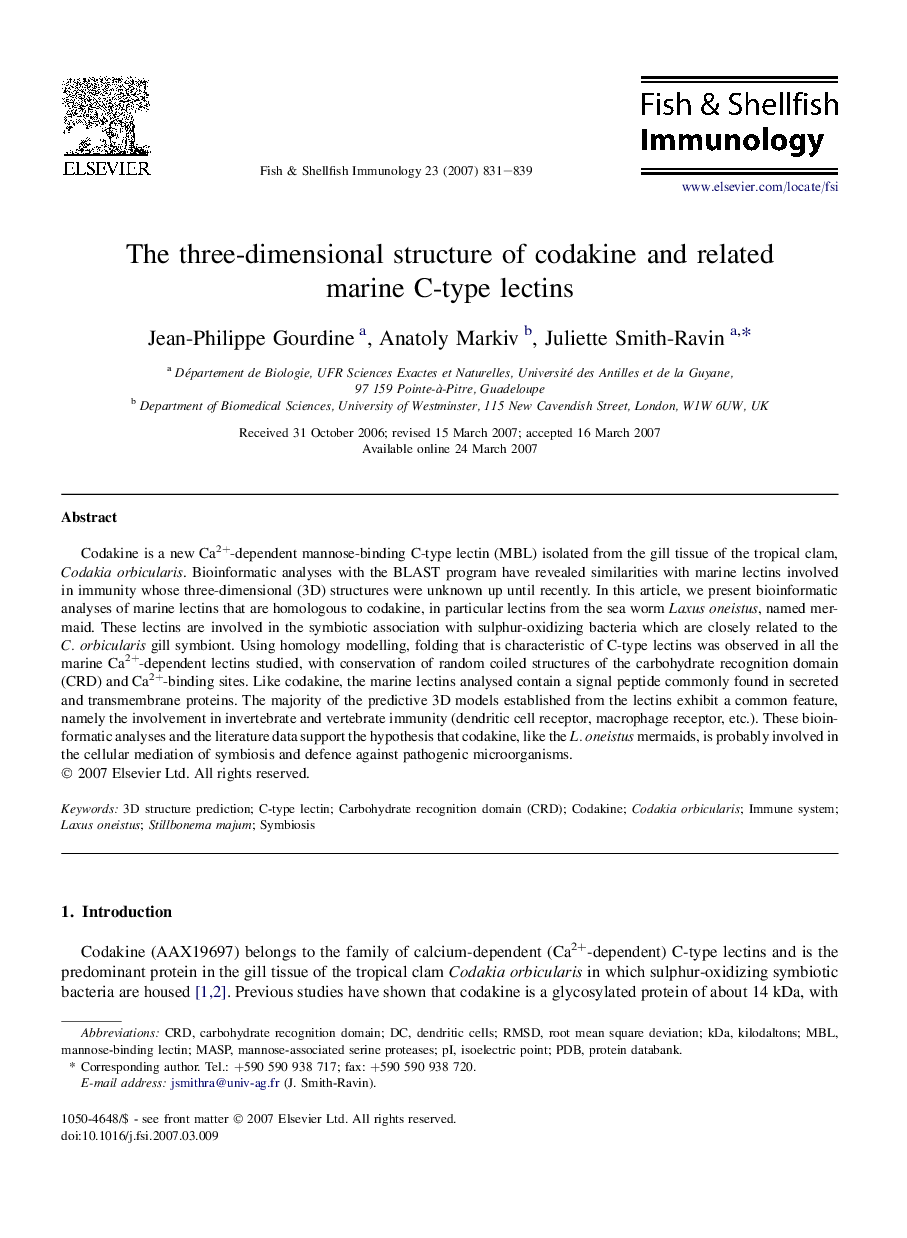| Article ID | Journal | Published Year | Pages | File Type |
|---|---|---|---|---|
| 2433552 | Fish & Shellfish Immunology | 2007 | 9 Pages |
Codakine is a new Ca2+-dependent mannose-binding C-type lectin (MBL) isolated from the gill tissue of the tropical clam, Codakia orbicularis. Bioinformatic analyses with the BLAST program have revealed similarities with marine lectins involved in immunity whose three-dimensional (3D) structures were unknown up until recently. In this article, we present bioinformatic analyses of marine lectins that are homologous to codakine, in particular lectins from the sea worm Laxus oneistus, named mermaid. These lectins are involved in the symbiotic association with sulphur-oxidizing bacteria which are closely related to the C. orbicularis gill symbiont. Using homology modelling, folding that is characteristic of C-type lectins was observed in all the marine Ca2+-dependent lectins studied, with conservation of random coiled structures of the carbohydrate recognition domain (CRD) and Ca2+-binding sites. Like codakine, the marine lectins analysed contain a signal peptide commonly found in secreted and transmembrane proteins. The majority of the predictive 3D models established from the lectins exhibit a common feature, namely the involvement in invertebrate and vertebrate immunity (dendritic cell receptor, macrophage receptor, etc.). These bioinformatic analyses and the literature data support the hypothesis that codakine, like the L. oneistus mermaids, is probably involved in the cellular mediation of symbiosis and defence against pathogenic microorganisms.
